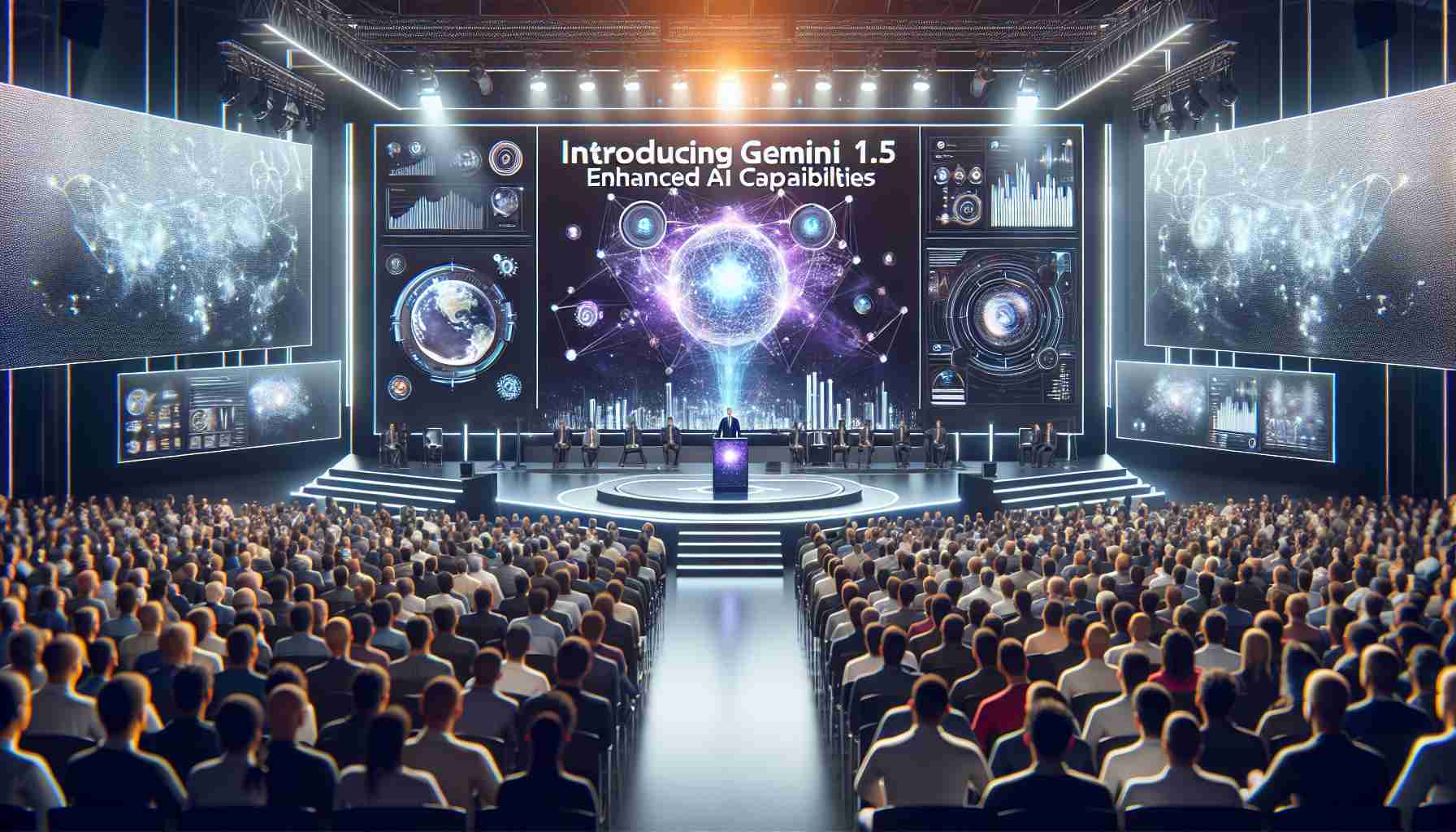Google’s Recent AI Developments Take Center Stage
In a year of rapid progress, Google has continued to make significant strides in the field of artificial intelligence. At the recent Google I/O developer conference, the tech giant announced the rebranding of its AI chatbot to Gemini, along with the introduction of new AI models. This marks a shift as AI becomes increasingly woven into Google’s ecosystem, enhancing everything from the familiar Search engine to the cutting-edge Android 15.
The Debut of Gemini 1.5 Flash
The highlight of the conference was the revelation of Gemini 1.5 Flash, the newest AI model to join Google’s lineup. This model stands out as not only the swiftest option within the Gemini series but also as a more budget-friendly alternative to Gemini 1.5 Pro. Nonetheless, it does not compromise on performance. Google has made this model accessible for public preview in its AI studio.
Enhancements to Gemini 1.5 Pro
The recently introduced Gemini 1.5 Pro model has not been left behind; it has undergone improvements to deliver better-quality outputs across a variety of domains, including language translation and coding. The updated Gemini 1.5 Pro now features an enlarged 1 million context window, now available to consumers, allowing the analysis of extensive documents, a feature particularly beneficial for lengthy PDF files.
Expanding the Context Window and Multimodal Capabilities
Google is not one to rest on its laurels, as it is currently showcasing an even larger two million context window in its AI Studio for developers. Moreover, Gemini Nano has broadened its abilities to include image processing, signaling a move towards multimodal applications that can interpret visual and auditory inputs.
Advancements in the Gemma Model Family
In addition to Gemini developments, the Gemma suite of models is also receiving an upgrade with the upcoming launch of Gemma 2, which boasts optimization for TPUs and GPUs and will roll out with 27B parameters. The introduction of PaliGemma, Google’s first vision-language model, further signifies Google’s commitment to pioneering AI technology.
Transformative Features in Google Search
Google Search is set to become even more user-friendly with the integration of AI overviews, now available outside of Search Labs. Improved AI models tailored for Google Search will now provide conversational summaries directly within search results, enhancing user experience.
Google also plans to refine the Search results page with AI-organized results that generate context-specific headlines, set to launch initially in the U.S. for searches about inspiration-centric topics.
In Search Labs, additional features such as adjustable AI overviews and visual search capabilities will soon be available. These innovations, along with Search’s new meal and trip planning functionalities, underscore Google’s relentless pursuit of creating more responsive and intuitive AI products for its users.
Relevant Additional Facts:
– Google often introduces new features and products at the Google I/O developer conference, which is an annual event focused on software development, particularly for the Android platform, Google’s cloud services, and the web.
– Gemini may build upon technologies such as BERT (Bidirectional Encoder Representations from Transformers), which Google uses to understand the nuances and context of words in searches.
– The shift towards larger context windows can be seen as Google’s effort to enhance the capabilities of natural language processing (NLP) to accommodate the needs of users handling larger datasets or content sizes.
– Google’s focus on multimodal capabilities reflects the trend of combining different types of data (text, vision, voice) to create more sophisticated AI applications.
– The updates to Gemma and the PaliGemma model may involve using Google’s machine learning platform, TensorFlow, as well as the utilization of TPUs (Tensor Processing Units), which are custom-developed hardware for machine learning tasks.
Important Questions and Answers:
What is the difference between Gemini 1.5 Flash and Gemini 1.5 Pro?
– Gemini 1.5 Flash is designed to be a faster, more cost-effective alternative within the Gemini series, while Gemini 1.5 Pro offers an enhanced 1 million context window and improvements in various AI functions.
What enhancements does the new search functionality include?
– The new AI-powered search includes conversational summaries directly in search results and AI-organized results with context-specific headlines. It also offers improved meal and trip planning features as part of Google’s efforts to create a more intuitive user experience.
Key Challenges and Controversies:
– Privacy and Data Security: Handling more data could lead to potential privacy concerns, especially with large documents and the integration of multiple data types.
– Ethical Use of AI: As AI becomes more integrated into everyday products, ensuring ethical use and tackling biases in AI models remain challenges.
– Accuracy and Reliability: The reliability of AI-generated content is often under scrutiny, and Google must continue to improve the accuracy of its models.
Advantages and Disadvantages:
Advantages:
– Enhanced User Experience: AI models like Gemini aim to improve user interactions with Google’s suite of products, offering more efficient, relevant, and intuitive experiences.
– Cutting-edge Technology: Google’s investment in multimodal capabilities and advanced language models represents its commitment to leading in AI technology.
Disadvantages:
– Complexity and Accessibility: Advances in AI may add complexity to products and might not be immediately accessible or understandable to all users.
– Resource-Intensive: Large AI models require significant computational resources, which can impact costs and the environment.
Suggested Related Links:
– For news and updates on Google’s technology, one can visit the official Google blog at Google Blog.
– Google’s main home page, where some of its products and services are accessible, is Google.
The source of the article is from the blog xn--campiahoy-p6a.es
